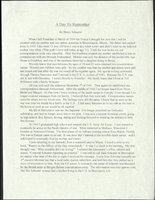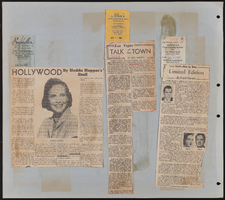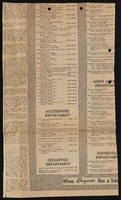Search the Special Collections and Archives Portal
Search Results
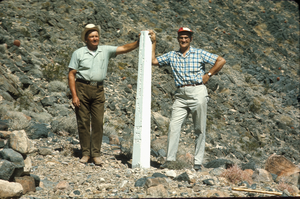
Slide of John Lytle at Emigrant (Fremont) Gap on the Old Spanish Trail, California, circa 1960s
Date
Archival Collection
Description
Image

Transcript of interview with Alice Thiriot Waite by Carole Terry and Donna Andress, October 19, 2011
Date
Archival Collection
Description
The memories and recollections of Alice Thiriot Ballard Waite provide a most interesting look at both at the Junior League of Las Vegas in the 1970s and the early days of Las Vegas. Alice recalls her childhood and young adult years after she arrived in Las Vegas at the age of five, giving the reader a rare picture of Las Vegas in the 1950s and 1960s. She was most active in the volunteer community of Las Vegas and served as Junior League President in 1964-5. Her reminiscences about the events and activities during the years while she was a Junior League member are an invaluable insight into its history. The exhibits she is sharing are an important documentation of those years after the Service League became the Junior League. She herself was a forerunner of today's Active members because she was a single, working mother while serving as the first "professional" President of the League.
Text
Eberhardt and Aurora Mining Company Records
Identifier
Abstract
The Eberhardt and Aurora Mining Company Records (approximately 1869-1877) are comprised of the administrative records and financial documents of the mining company located in White Pine County, Nevada. The majority of the collection contains correspondence, but also includes several documents relating to the company's finances such as bills, receipts, cancelled checks, and bank statements.
Archival Collection
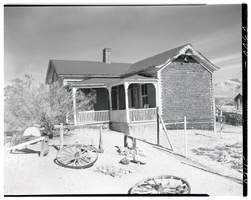
Film transparency of the famous Tom Kelly Bottle House in Rhyolite, Nevada, November 25, 1948
Date
Archival Collection
Description
Image
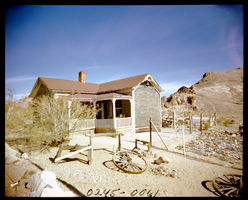
Film transparency of the famous Tom Kelly Bottle House in Rhyolite, Nevada, November 25, 1948
Date
Archival Collection
Description
Image

